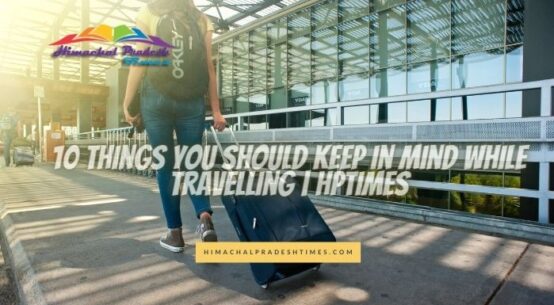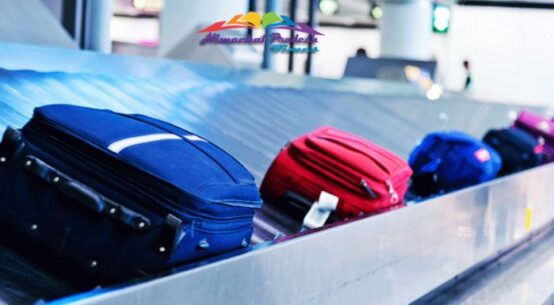Welcome to the exciting world of travel photography! You can capture incredible moments in various locations and create priceless memories. Tips to make better photos while travelling will help you to create better travel images whether you are a beginner or an experienced photographer. We will share five valuable tips that will improve your skills and ensure you come back from your trips with fantastic pictures. You will learn about composition, using natural light, and contrast, and finding unique angles. Get ready to take mesmerizing photos that truly represent your travel. So, grab your camera, bring your sense of adventure, and let’s explore the art of travel photography together. We will show you how to turn ordinary pictures into extraordinary pieces of art by using these five essential tips.
5 Tips to Make Better Photos While Travelling
Composition + Contrast
To capture stunning travel photographs, focus on composition and contrast. Composition involves arranging elements within the frame, such as lines, shapes, colours, and textures, to create a visually pleasing image. The rule of thirds and leading lines are effective compositional techniques. Contrast, including tonal, colour, and texture contrast, adds visual impact to your photos. Utilize deep shadows, bright highlights, complementary colours, and contrasting textures to make your images more engaging. By applying these principles, you can create captivating travel photographs that tell compelling visual stories. Experiment with different perspectives and framing to develop your unique style.
Unique Angles
When it comes to travel photography, exploring and experimenting with different angles is crucial for improving your photos and capturing unique perspectives. Unique angles add depth, dimension, and a fresh perspective to your images. They create layers, emphasize scale, change the perspective, highlight details and patterns, and break away from the norm. To incorporate unique angles, keep an open mind, explore your surroundings, and experiment until you find the angles that enhance your composition and convey the story you want to tell. Unique angles are your best tool for capturing the essence of a place from a captivating perspective.
Use of natural light
Photography relies heavily on lighting, and natural light can greatly enhance travel photos. The golden hours, shortly after sunrise and before sunset, offer soft, warm light that adds depth and atmosphere. Pay attention to the direction of light to create interesting shadows and highlights. Overcast days provide diffused light that works well for portraits and textured scenes. Avoid harsh midday light by exploring indoor locations or focusing on details. Incorporate natural elements like trees, architecture, and water to add visual interest. Remember to experiment and trust your own artistic vision to capture stunning photos that tell your journey’s story.
White Balance
Mastering white balance is crucial for capturing stunning travel photos. White balance adjusts colours in a photo to represent true white regardless of lighting conditions. It ensures accurate colours, enhancing the visual appeal of your images. Different white balance presets cater to various lighting situations. Shooting in RAW format allows for flexible post-processing adjustments. Custom white balance captures an image under prevailing lighting conditions for accuracy. White balance can also be used creatively to convey mood. Post-processing editing can fine-tune white balance. By understanding and utilizing white balance techniques, you can elevate your travel photography and capture the essence of your experiences more vividly.
Keep Your Camera Steady
While travelling, it is crucial to keep your camera steady to capture memorable moments. A steady camera ensures sharp, well-composed, and blur-free images. Stability enhances image quality, sharpness, detail, and composition. In low-light situations, stability becomes even more critical. Here are some tips for keeping your camera steady while travelling:
- Use a tripod or monopod: Carry a lightweight travel tripod or monopod for stability and flexibility in your shots.
- Find stable surfaces: Rest your camera on solid ledges, or tables, or use a bean bag if you don’t have a tripod. Use a timer or remote control to avoid touching the camera during the shot.
- Maintain proper grip and body stance: Hold the camera firmly with both hands, elbows tucked in, and body relaxed. Brace yourself against stable objects or use a wall/tree for support. Take a deep breath and exhale slowly when pressing the shutter.
- Enable image stabilization: If available, use the built-in image stabilization feature in your camera or smartphone to compensate for minor movements.
- Utilize burst mode or continuous shooting: When dealing with moving subjects or challenging conditions, use burst mode or continuous shooting to increase the chances of capturing a sharp image.
Remember to balance stability with creativity and experiment with different angles and techniques.
The Essential Buttons That You Should Find on Your Camera:
ISO (International Organization for Standardization):
The ISO of your camera’s image sensor determines how sensitive it is to light. By adjusting the ISO button, you can control the level of sensitivity, which impacts the camera’s ability to capture pictures in low-light situations. The ISO setting is represented by a numerical value like 100, 200, 400, and so on. In well-lit environments, a lower ISO value such as 100 is appropriate, whereas higher values like 800, 1600, or even higher are used in darker conditions. Nevertheless, raising the ISO also introduces digital noise or graininess into the picture. Hence, it is advisable to use the lowest possible ISO while still achieving a properly exposed photograph.
White Balance:
White balance is a feature that compensates for varying lighting conditions to ensure accurate colour representation in your images. You can choose a precise setting to match the colour temperature of the scene you are photographing by using the White Balance button. There are many popular white balance presets, such as overcast, incandescent, fluorescent, and more. These defaults assist remove unwelcome colour casts by accounting for the colour temperature of various light sources. A custom white balance setting is also available on some cameras, allowing you to manually calibrate the white balance using a neutral grey reference.
Exposure:
The exposure button on your camera is a vital feature for capturing great photos while travelling. It allows you to control the amount of light that reaches the camera’s sensor, resulting in the brightness or darkness of your images. By manipulating the exposure settings, such as shutter speed, aperture, ISO sensitivity, and exposure compensation, you can capture scenes in different lighting conditions and create stunning photographs that truly reflect the atmosphere and mood of your travel experiences. Mastering the use of the exposure button will elevate your travel photography skills and enable you to tell unique visual stories through your images.
Conclusion:
So, here we have discussed vital tips to make better photos while travelling. Master the art of photography by implementing these techniques. From composition and lighting to equipment and post-processing, this guide will help you create stunning visuals. Experiment, take risks, and let your creativity shine. Whether capturing landscapes, cityscapes, or portraits, these tips will be your companions. Practice, persistence, and passion are key. Explore the world with a fresh perspective and capture its essence. Your photographs can transport and inspire. Push boundaries, sharpen skills, and create unforgettable moments. May your photography journey be filled with captivating images!
FAQs:
How do you make a Far-Away Picture Look Good?
Converging lines offer an effective technique for indicating distance. As these lines extend further, they gradually diminish in size until they vanish at the horizon. By guiding your gaze along these lines, they create a perception of depth and distance in the photograph, lending it a heightened sense of energy and dimension.
What Makes Photos Look Professional?
To ensure a professional appearance for your photos, it’s beneficial to apply some level of editing. You don’t have to go overboard; simply adjusting the white balance and exposure, reducing noise, sharpening, and enhancing contrast and saturation can greatly enhance an image, especially when working with RAW files.
How Do You Make a Picture Look Amazing?
Some important tips to make a picture look amazing are listed below:
- Employ gridlines to achieve a balanced composition in your photo.
- Adjust the focus of your camera to ensure clarity and sharpness.
- Utilize the High Dynamic Range (HDR) mode for enhanced image quality.
- Take advantage of natural lighting conditions for your photographs.
- Concentrate on a single subject to create a focal point in your image.
- Keep your phone steady while capturing the photo.
- Take into account purchasing a tripod specifically designed for mobile devices.
- Embrace the use of empty or negative space to add artistic impact to your composition.
How do I take better outdoor pictures?
Some of the essential tips to take better outdoor pictures are mentioned below:
- Bring a tripod with you.
- Capture photos during the period known as the “magic hour.” Arrange your hiking schedule to take advantage of favourable lighting conditions.
- Utilize additional lighting sources.
- Steer clear of placing the main subject at the centre of the frame when composing your photo. Deliberately shift objects off-centre.
- Embrace simplicity and minimalism.
- Incorporate a personal or human element into your photos.
- Capture moments of action and movement.
- Pay attention to the presence of water in your surroundings and its potential for interesting photo opportunities.
Hope you will find this guide to be helpful and informative to you. You can share your valuable feedback regarding the blog. And also, for more such informative and interesting topics, please stay in touch with our page.
Read Also:
Top Three Places in Himachal to Enjoy the #realphotography
How To Choose The Right Travel Pillow For Your Needs?
Gift the Best Happy New Year Gift and Card to Your Beloved
Thank You.



